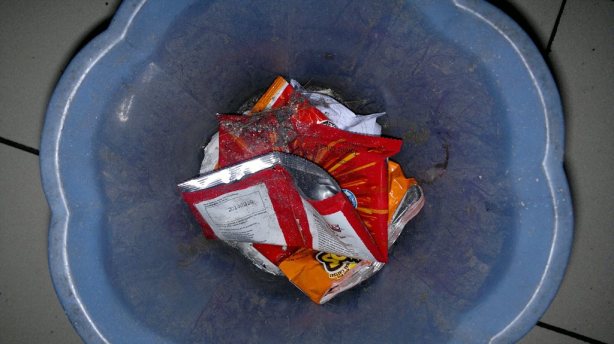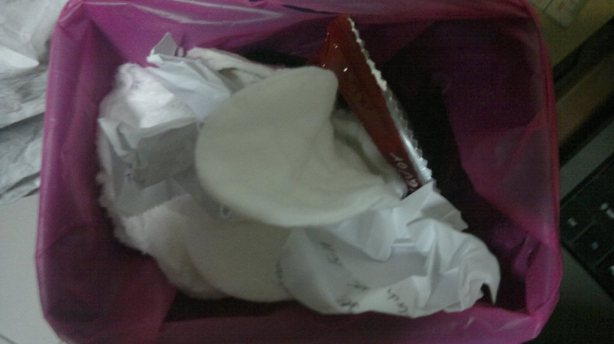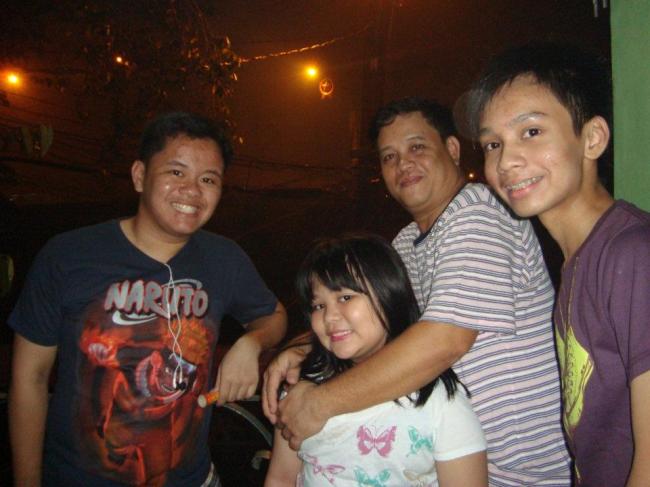This is what I’ve collected garbage for three days. I realized that as a person I have so many waste everyday that I just carelessly throw from the trash can. I’ve realized as well that just how much it was compiled and compared to the payatas I’m really sad because after it will be taken from the garbage truck through the site. It will just be compiled and compiled because of just selfish throwing. It might as well cause of the pollution because some might be a toxic element which is harmful for the land. I must learn how to recycle so that it can be of help to lessen the garbage and it might be of great help in the future.
Rock Cycle Assessment Test Results: 87%
13 of 15 Correct
Name: John Marthin J. San Gregorio Date: October 2, 2013
1.
What type of igneous rock makes up most of the ocean floor?
a. Basalt
b. Granite
c. Lucite
d. Shale
You answered correctly!
2.
Some of the rocks that the spires (also known as hoodoos) of Utah’s Bryce Canyon are made of
are limestone and sandstone. What type of rock is limestone and sandstone?
a. Igneous
b. Metamorphic
c. Sedimentary
d. None of the above
You answered correctly!
3.
Which geologic process is illustrated in this animation?
a. Compacting and cementing
b. Cooling
c. Heat and pressure
d. Melting
The correct answer is c) Heat and pressure
Review: Chapter 3: How Rocks Change
4.
What element is missing from this diagram of the rock cycle?
a. Compacting and cementing
b. Sediment
c. Sedimentary rock
d. Weathering and erosion
You answered correctly!
5.
Identify the series of geologic processes that can transform sandstone into quartzite, quartzite
into magma, and magma into rhyolite.
a. Compacting and cementing; heat and pressure; melting
b. Cooling; melting; heat and pressure
c. Melting; heat and pressure; cooling
d. Heat and pressure; melting; cooling
You answered correctly!
6.
Which geologic process is illustrated in this animation?
a. Cooling
b. Heat and pressure
c. Melting
d. Weathering and erosion
You answered correctly!
7.
What geologic process can change granite (igneous rock) into gneiss (metamorphic rock)?
a. Compacting and cementing
b. Cooling
c. Heat and pressure
d. Melting
The correct answer is c) Heat and pressure
Review: Chapter 3: How Rocks Change
8.
Which geologic process can change any type of rock into sediment?
a. Cooling
b. Heat and pressure
c. Melting
d. Weathering and erosion
You answered correctly!
9.
Which characteristic is found in sedimentary rocks?
a. Crystals
b. Fossils
c. Gas bubbles
d. Glassy surface
You answered correctly!
10.
What geologic process changes pieces of rocks, minerals, and other material into sedimentary
rock?
a. Compacting and cementing
b. Cooling
c. Heat and pressure
d. Melting
You answered correctly!
11.
Rocks melt at what temperature range?
a. 50 to 100 degrees Celsius
b. 130 to 200 degrees Celsius
c. 220 to 500 degrees Celsius
d. 600 to 1,300 degrees Celsius
You answered correctly!
12.
The interrelationship among the three rock types is identified as which of the following?
a. The rock cycle
b. The rock formation
c. The rock helix
d. The rock metamorphosis
You answered correctly!
13.
Which characteristic is common to metamorphic rocks?
a. Fossils
b. Gas bubbles
c. Glassy surface
d. Ribbonlike layers
You answered correctly!
14.
The seated sculpture of President Lincoln inside the Lincoln Memorial was carved out of white
Georgia marble. What type of rock is marble?
a. Igneous
b. Metamorphic
c. Sedimentary
d. None of the above
You answered correctly!
15.
What element is missing from this diagram of the rock cycle?
a. Sedimentary rock
b. Compacting and cementing
c. Melting
d. Metamorphic rock
You answered correctly!
Dynamic Earth Assessment Test Results: 87%
26 of 30 Correct
Name: John Marthin J. San Gregorio Date: October 2, 2013
1.
When did the Himalayan Mountain Range begin to form?
a. 5,000-6,000 years ago
b. 20-30 million years ago
c. 40-50 million years ago
d. 100-150 million years ago
The correct answer is c) 40-50 million years ago
Review: Chapter 5: Slip, Slide, & Collide
2.
Approximately 225 million years ago, the earth’s continents were grouped into one landmass.
What is the landmass called?
a. Europa
b. Jurassic
c. Pangaea
d. Pangaea Ultima
You answered correctly!
3.
Which of the following geologic events can occur at a transform boundary?
a. Earthquake
b. Mountain formation
c. Volcanic eruption
d. Rift formation
You answered correctly!
4.
Mid-ocean ridges are places where tectonic plates are doing what?
a. Colliding
b. Sliding past each other
c. Spreading apart
d. None of the above
You answered correctly!
5.
Which of these statements is correct?
a. Continental crust is thicker than oceanic crust.
b. Continental crust is thinner than oceanic crust.
c. Oceanic crust is thicker than continental crust.
d. Continental and oceanic crusts have the same thickness.
You answered correctly!
6.
This animation depicts which of the following?
a. Earthquake
b. Rift formation
c. Mountain formation
d. Volcanic eruption
You answered correctly!
7.
What kind of plate boundary is found where the North American and Caribbean Plates meet?
a. Caribbean boundary
b. Convergent boundary
c. Divergent boundary
d. Transform boundary
You answered correctly!
8.
What is happening at the subduction zone of the Juan de Fuca and North American Plates?
a. Plates are sliding past each other.
b. Plates are spreading apart.
c. One plate is being pulled under another.
d. None of the above.
The correct answer is c) One plate is being pulled under another.
Review: Chapter 5: Slip, Slide, & Collide
9.
When did the supercontinent Pangaea start to break up?
a. 20 million years ago
b. 40 million years ago
c. 100 million years ago
d. 200 million years ago
You answered correctly!
10.
Which scientist is credited with proposing the ideas that led to the development of the plate
tectonics theory?
a. Charles Darwin
b. Albert Einstein
c. Isaac Newton
d. Alfred Wegener
You answered correctly!
11.
The tectonic plates float on which semiliquid layer?
a. Asthenosphere
b. Crust
c. Inner Core
d. Lithosphere
You answered correctly!
12.
Which of the earth’s layers is broken into several large tectonic plates?
a. Asthenosphere
b. Crust
c. Lithosphere
d. Outer Core
You answered correctly!
13.
What is the name of this tectonic plate?
a. Cocos Plate
b. Nazca Plate
c. Scotia Plate
d. South American Plate
You answered correctly!
14.
Mountain formation can result when which of the following occurs?
a. Two oceanic plates collide.
b. Two continental plates collide.
c. Two oceanic plates spread apart.
d. None of the above.
You answered correctly!
15.
What kind of plate boundary is found at the meeting point of the Philippine and Pacific Plates?
a. Asian boundary
b. Convergent boundary
c. Divergent boundary
d. Transform boundary
You answered correctly!
16.
What is NOT likely to happen at a divergent boundary?
a. Mountain formation
b. Rift valley
c. Seafloor spreading
d. Volcano formation
The correct answer is a) Mountain formation
Review: Chapter 5: Slip, Slide, & Collide
17.
This solid layer of the earth is made of mostly iron and nickel.
a. Crust
b. Inner Core
c. Mantle
d. Outer Core
You answered correctly!
18.
What type of crust is found under the continents?
a. Continental crust
b. Oceanic crust
c. Geologic crust
d. None of the above
You answered correctly!
19.
What type of crust is found under the oceans?
a. Continental crust
b. Oceanic crust
c. Geologic crust
d. None of the above
You answered correctly!
20.
What is the earth’s only liquid layer?
a. Asthenosphere
b. Inner Core
c. Mantle
d. Outer Core
You answered correctly!
21.
What is the name of this tectonic plate?
a. African Plate
b. Antarctic Plate
c. Arabian Plate
d. Indian Plate
You answered correctly!
22.
What is the border between two tectonic plates called?
a. Boundary
b. Collision zone
c. Rift
d. Trench
You answered correctly!
23.
This animation depicts which of the following?
a. Earthquake
b. Mountain formation
c. Subduction zone
d. Rift formation
You answered correctly!
24.
California’s San Andreas Fault is identified as which of the following?
a. Blind thrust fault
b. Dip-slip fault
c. Normal fault
d. Strike-slip fault
You answered correctly!
25.
Which of these concepts is part of the theory of plate tectonics?
a. Continents are fixed and don’t move.
b. A great flood shaped the earth’s surface.
c. Continents are in slow constant motion.
d. None of the above.
You answered correctly!
26.
What is the name of this tectonic plate?
a. Australian Plate
b. Indian Plate
c. Pacific Plate
d. Philippine Plate
You answered correctly!
27.
What kind of plate boundary runs across Iceland?
a. Convergent boundary
b. Divergent boundary
c. Nordic boundary
d. Transform boundary
You answered correctly!
28.
Which of these layers is found directly above the earth’s core?
a. Asthenosphere
b. Inner Core
c. Mantle
d. Outer Core
The correct answer is c) Mantle
Review: Chapter 2: Earth’s Structure
29.
What leads to the creation of island arcs?
a. Collision of two oceanic plates.
b. Collision of two continental plates.
c. Collision of a continental and an oceanic plate.
d. All of the above.
You answered correctly!
30.
What is the earth’s outermost layer?
a. Crust
b. Lithosphere
c. Mantle
d. Outer Core
You answered correctly!
Laguna De Bay

Laguna De Bay is located in Reigion IV-A and is the largest inland water covering 98,000 hectares and it is located at the heart of CALABARZON because it covers through the provinces. Its economical source comes from fishing, agriculture and source of electricity. it is protected by an executive order no. 121 know as “Creating The Mt. Makiling reserved area and Laguna De Bay Commission” it is been ordered by Fidel V. Ramos last August 24, 1993.
There are many animals surrounding lake:
– 31 species of fishes
– 154 species of phytoplankton
– 36 species of zooplankton
– 24 species of macrophytes
– mollusks
– crustaceans
Not all wetlands are the same because some species lives only in a specific wetland and it depends on its nutrition from the water where the animal species will go to. its ecological significance is that it is where the birds caught their food for it’s rich in its aquatic animals like fishes and others and also the fish is the main source of food availabe in the region besides rice that is being planted there. wetlands should be protected because it is one of the source of water for humans so that we can survive and also we must protect the home of the aquatic animals so that they will not be endangered and have source of food. I think the best way to protect our wetland is from stopping it from being polluted, use its natural resources thinking for the future and take care of the animals present there.
After watching the movie, I felt so much stress because I didn’t have any idea what’s really happening now in our world. So many problems has been discuss in the movie but the most frightening is our natural resources is slowly diminishing and it’s about to be gone. Because of this movie I have become more aware in what’s happening to our nature and in order for myself to be a useful and helpful human being, I must prevent myself from doing that mustn’t be good to nature. I must throw my garbage into the right bin in order to prevent pollution. I will not smoke to help to save our air from getting any dirtier.



